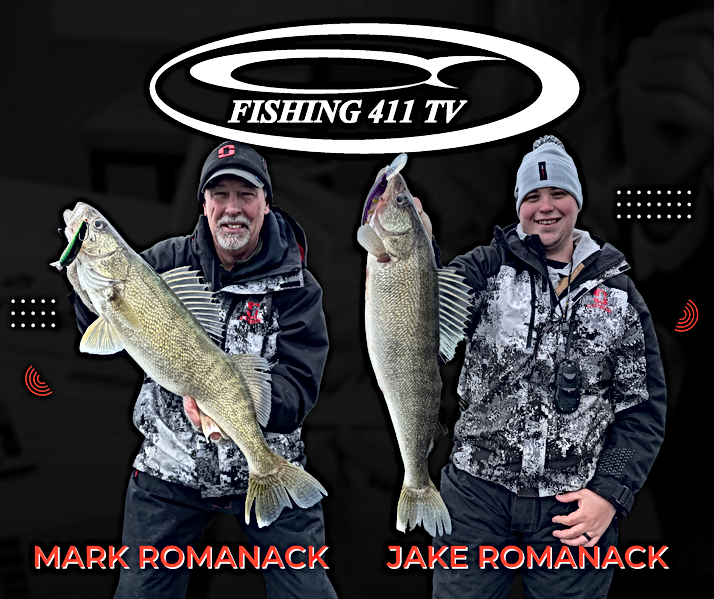The interesting thing about fishing walleye in the fall is that the majority of anglers are trolling crankbaits. No doubt, crankbaits are an awesome way to target walleye in the Great Lakes and other larger basins of water. The question remains however, what about those anglers who don’t have the boats and gear to fish these off shore waters?

Jig fishing in rivers is very popular in the spring, but a lot of anglers don’t realize in the fall we get a second crack at these fish.
For the angler who loves to fish in the fall and can’t get enough of their favorite species the walleye, river jigging is the quick fix. Michigan’s top walleye rivers all see a push of fish in the fall and hardly anyone targets these fish. The crowds at boat launches that are so common during the spring spawning run are but a distant memory in October, November and December.
The walleye that turn up in places like the Detroit, Saginaw, Tittabawassee, Kalamazoo and St. Joe Rivers in the fall are a different critter than the ones that run the rivers in early spring. Instead of spawning on their minds, these fish have nothing better to do with their time than feed. Gizzard shad flood into rivers during the fall when the main lake temperatures start to plummet.
The gizzard shad are looking for some warmer water and the walleye are just looking for an easy meal. Anyone who has ever experienced river walleye in the fall knows these fish are literally “binge” feeding.
DUST OFF THE JIGGING RODS
The months of October, November and December are the perfect time to dust off the jigging rods that have probably set idol since April. The perfect set up consists of a six to six foot, six inch medium or medium/light action spinning outfit loaded with a 10 pound test super line such as Berkley’s Spider Wire or Nanofil. Both of these lines feature ultra thin diameter and near zero stretch making them the ideal fishing line for vertical jigging.
Super braids are super sensitive making them ideal for contact fishing methods such as jigging. I love the sensitivity of braids and fused lines and I also like using high visibility colors such as chartreuse. What I’m not very comfortable with is tying these high visibility lines directly to my jigs. For one, super lines are slippery and they don’t hold traditional fishing knots very well. Secondly, I feel these lines create an unnatural connection between lure and line.

My solution is to rig up using a three foot leader of 15 pound test fluorocarbon line double uni-knotted to the super line. The jig is in turn tied directly to the fluorocarbon line making for an invisible connection between lure and fishing line.
BIG JIGS AND PLASTICS RULE
For most vertical jigging applications it’s better to use jigs that are on the heavy side. To vertical jig correctly the jig must be in contact with bottom and the only practical way to achieve this is to use a jig that is clearly heavy enough for the job.
The lightest jigs I typically use for vertical jigging are 3/8 ounce and more commonly I’m reaching for 1/2, 5/8 and even 3/4 ounce jigs. Large jigs not only make it easier to maintain contact with the bottom, they enable anglers to also embrace the use of larger soft plastics.
In the fall, walleye are targeting larger average size prey fish. The normal three inch plastics used in the spring are okay, but bumping up to four and even five inch plastics pays big dividends in the fall.
Both split tail minnow grubs and also paddle tail style grubs are ideal for fall walleye jigging. When the bite is good I tend to gravitate towards the paddle tails, but always carry the split tail grubs as well. The split tail grubs feature a more subtle action and some days they prove more productive than the obvious thump of the paddle tail grub.

Nothing beats feeling a fish bite and crossing his eyes. Jig fishing in the fall is something every walleye angler should experience.
LIVE BAIT FOR THE TRADITIONALIST
If you’re a traditionalist, don’t hesitate to fish minnows for fall walleye jigging. I find that most days using live bait isn’t necessary, but a big part of fishing is having the confidence to stick with a presentation. A lot of anglers simply don’t have enough confidence in soft plastics and for these anglers, using minnows is the best alternative.
The last couple years we’ve been treating our minnows with a product called Bad Azz Bait Dye produced by Pro Cure. This bait dye comes in small squeeze bottle and in a variety of colors. We find that it’s tough to beat the chartreuse formula when fishing in off color river water.
Simply put a few minnows in a shallow container and add a few drops of Bad Azz Bait Dye directly to the minnows. It takes a couple minutes, but the minnows take on the chartreuse color, making them much more visible in stained to dirty water.
INDIAN SUMMER
Blue bird Indian summer weather ranks as some of the best days to be on the water. Stable weather tends to light up these fish, making for some very memorable and enjoyable days on the water.
